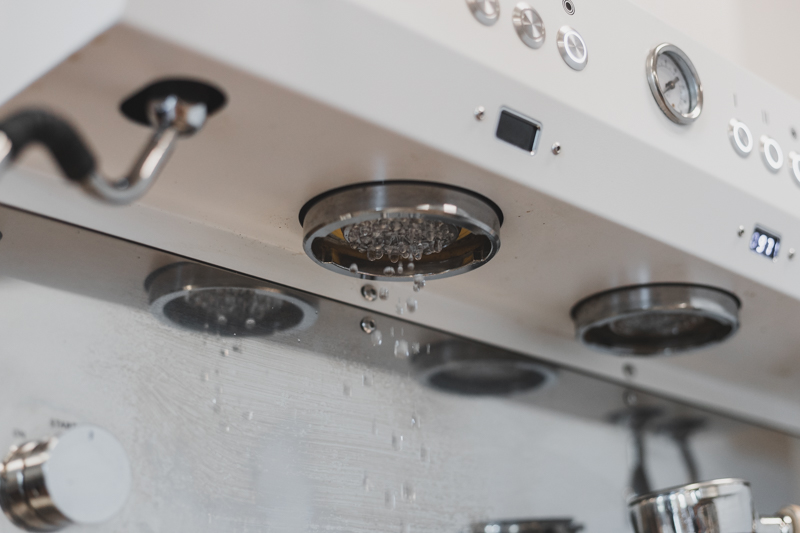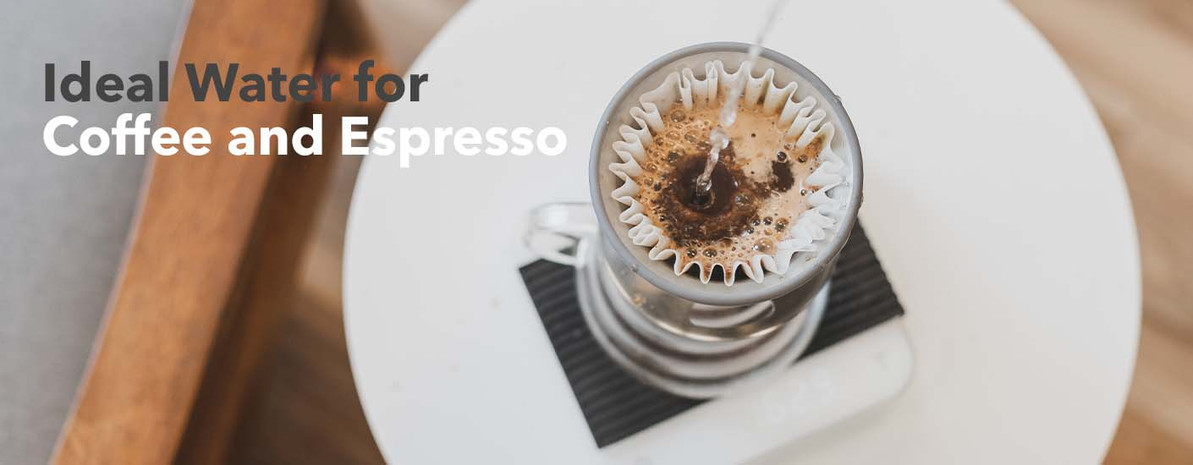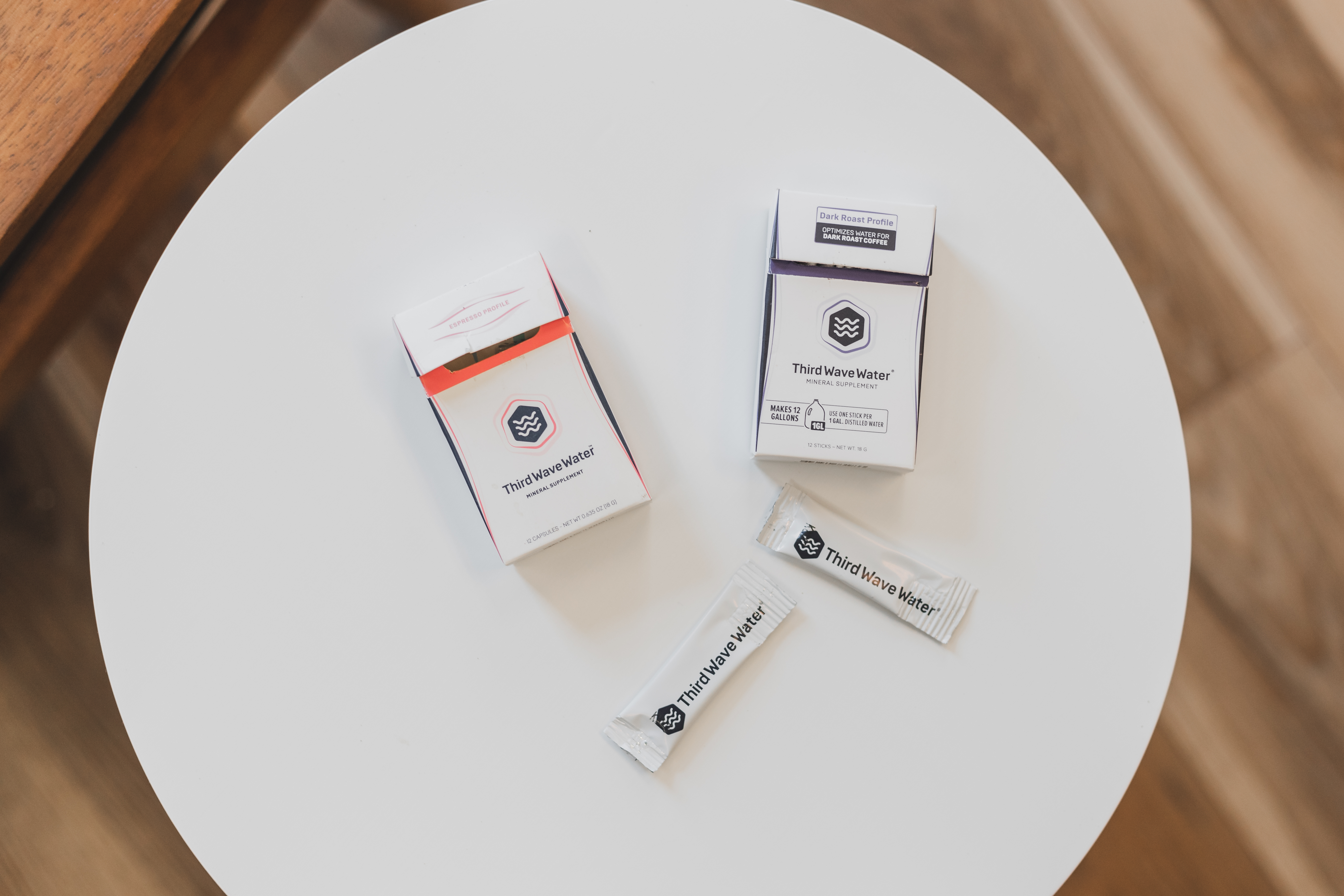Water for Filter Coffee vs. Espresso
Water is one of the more complicated variables involved in making great coffee and espresso. Spending time researching terms like "bicarbonate" and "chloride" and how they affect your water can leave you feeling like you’re cramming for a chemistry final. So when you hear there are different ideal characteristics for your filter coffee water and espresso, you may feel like throwing in the towel and giving up. And hey, we hear you, and that's why we’ve done some of the grueling work for you.
Let us be the first to tell you, there is no perfect water. However, there are characteristics and minerals that play a role in the overall outcome of your coffee, as well the effect it has on your equipment. So we’ve consolidated a lot of the information into one, easy-to-read article in hopes of saving you from a headache or confusion.

Bicarbonates
Ah yes, the bicarbonate. You may be currently asking yourself, "What on earth is a bicarbonate, and what does it do to my coffee?" Bicarbonates are alkaline compounds that remove the hydrogen ions from water, and do a wonderful job at balancing and suppressing the acidity in your coffee. To put it simply;
- More bicarbonates present means less acidity.
- Less bicarbonates present means more acidity.
To give you an example, espresso tends to be very acidic and filter coffee less so, even when you’re using the exact same water. This acidity, depending on the coffee, can be both good and bad. In certain coffees, it has the tendency of bringing out more complex flavors. But why then do we get such different results despite the water being identical? It has a lot to do with the amount of water being used.
Ratios
Ratios play a huge role in the difference between coffee and espresso. Referring back to the previous example, think about this; you have the same water to make a filter coffee and a shot of espresso. The filter coffee you're brewing, by nature, will consist of a higher ratio of water to coffee than a shot of espresso, thus, meaning there is more bicarbonate interacting with the coffee due to the larger amount of water than with the espresso, resulting in a less acidic drink. Conversely, the shot of espresso uses a ratio of less water to coffee than the filter, which results in a more acidic drink due to there being less bicarbonates present. Maxwell Colonna-Dashwood from Peak Water does a great job at explaining this in his video.
Minerals and Machines
Minerals do great things for the flavor of coffee, but not always for equipment. Many of the minerals present in our water are responsible for scale and corrosion. For example, chlorides are one of the culprits of corrosion in equipment and pipes. However, these chlorides can be removed through filtration or RO water.
Minerals like calcium and magnesium that are present in our water too are the cause of scale. They are largely responsible for the build up that occurs in espresso machines because the high level of heat causes these two minerals to bond together which results in the scale that will clog your water flow and eventually cause your machine to stop working. Conversely, water that is too soft, and lacks too many minerals, can be corrosive in nature too.
In a commercial setting you won’t often find a separate water system for coffee and espresso, but there are a few options for home that are easy and convenient.
The Peak Water Pitcher's dual-chamber design filters tap water in 2 steps. The main chamber has the capacity to remove all the minerals from your tap water with its dual-ion resin. The second chamber contains carbon that combats any unwanted organic compounds while letting through the desired amount of minerals like calcium and magnesium that improve the flavor of your coffee.
The adjustable dial allows you to set the setting that corresponds with the amount of minerals that pass through. More minerals, or a lower setting on the dial, mean less acidity. This is good for espresso and lighter roasted coffee with fruitier notes. Conversely, setting it to a higher setting makes the water softer, which works better with darker roasts or more floral notes.
Third water takes the guesswork out of water by creating an original formula and espresso formula. There is a slight difference in ingredients and ratios between the two formulas. The espresso blend eliminates the sodium chloride and raises the alkalinity to help guard the machine as the temperature rises and pressure increases, that can cause corrosion.
The minerals don’t play as big of a factor in filter coffee due to minimal pressure and heat compared to an espresso machine, so the original formula focuses on minerals that enhance the flavor of your coffee. All you need is a gallon of distilled or RO water, a packet of TWW and you’re ready to brew!
In conclusion, this is a lot of words for saying — there is no perfect water for coffee or espresso. Yes, there are certain minerals that can help certain notes shine through, and there are characteristics that will help maintain your machine, but it really comes down to preference in taste and what matters most to you. Ultimately, water that abides by SCAA Water Standards that can be achieved with the help of some of the products listed above, and practicing proper care and maintenance for your equipment, will suffice.
Having specific water for filter coffee and espresso at home is much more attainable than at a commercial level, but if you’re interested in installing a water system in your coffee shop or cafe, grab a water testing kit and based on those results you may benefit from a scale inhibitor, reverse osmosis with mineral addition, or catalytic carbon. And if you’d like to learn more about water for coffee, check out this blog.





